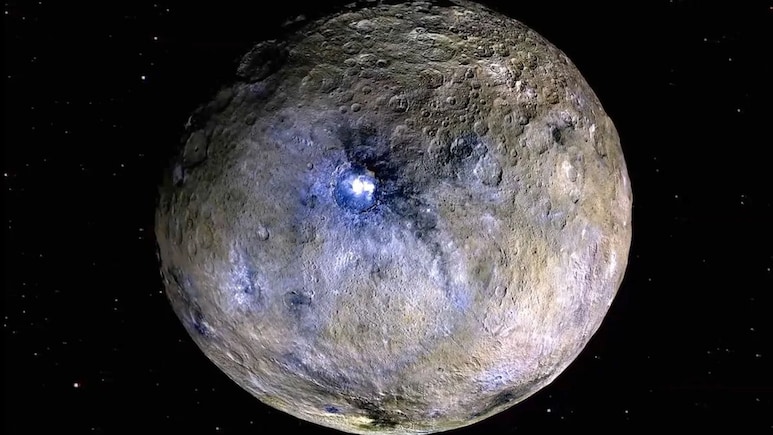
New research from NASA scientists suggests that Ceres, the largest object in the asteroid belt, may have once supported life. The study, led by Samuel W. Courville of Arizona State University, indicates that the dwarf planet could have had the right conditions for single-celled organisms between 2.5 and 4 billion years ago.
The findings are based on data from NASA's Dawn mission, which explored Ceres from 2015 to 2018. While Dawn's observations initially suggested that Ceres was too cold for liquid water, this new study proposes that the planetoid's interior may have been warmer in the past. This could have allowed for the presence of liquid water, a key ingredient for life.
Previously, scientists speculated that Ceres might be an "ocean world" with a liquid water interior, similar to moons like Europa and Enceladus. However, Dawn's data pointed to a colder interior with only concentrated brines. This new research re-evaluates those findings, offering a more optimistic view of Ceres's history. The paper, which summarises the findings, was published on August 20th in the journal Science Advances.
The Dawn mission revealed that Ceres, unlike other "Ocean Worlds," lacks the internal heat from radioactive decay or tidal forces needed to sustain a subsurface ocean today. However, data from Dawn indicated the presence of salts and organic molecules on its surface, suggesting liquid water existed in the past.
A new study using thermal and chemical models indicates that between 2.5 and 4 billion years ago, Ceres may have had a steady supply of hot water in its subsurface. This ancient hydrothermal activity could have created habitable conditions for single-celled life, offering a new perspective on the dwarf planet's history and its potential to have supported life.
Track Latest News Live on NDTV.com and get news updates from India and around the world

